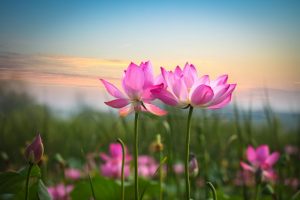
Happy, happy fertile days are here! New growth is punching through the earth and rabbits are leaping everywhere! The Vernal or Sping Equinox marks one of the eightfold festivals of the sacred wheel of the year. Although a neopagan celebration, Ostara is rich with antiquity and tradition. Easter, a later christianized form of Ostara, is the time when the cycle of birth, death and regeneration are honored. Ostara is the ritualistic honoring of the astrological earthly event, the Spring, occurring at the Equinox around March 21st, the regeneration of the Earth in the western hemisphere. Easter gets its name from the Teutonic Goddess Eostre, which means “East” and refers to the eastern rising sun which represents new beginnings.
New beginnings is the philosophical center of this holiday. Every six weeks, at the turning of the Wheel, pagans would take several days of rest to reflect on the past work done and prepare for the next season. At the time of the spring equinox, everything becomes busy as we prepare the soil and begin sowing new seeds. Tiny plants and seedlings are breaking through the hard packed earth, and the first green leaves bring hope after a long cold winter. Kheops, Intl. would like to extend this bountiful energy of spring to you as well as offer some creative gift ideas for your easter baskets!
The Wild Hare
The rabbit, a sacred animal to the Celts, represents fertility due to the superfecund nature of the female at the beginning of spring, and so the rabbit has continued to serve as this solstice’s personal mascot. As rations were low and food stores scarce by now, any meat and fresh greens available were cherished. Since rabbits breed rapidly and a female rabbit can become pregnant with a second litter while still pregnant with the first, coupled with the fact that during mating season, rabbits, especially the “bouncing” males, were seen everywhere, the wild hare was an honored source of nourishment.
Fertility Rites of Spring
It is only natural that fertility, resurrection and purification rites surround the energy of the first of spring in many cultures. The Romans, honoring the Goddess Cybele, believed that the God Attis was born of a virgin birth, died each year and was resurrected every spring. Along the same lines, the Romans also honored their God Mithras who taught his followers how to ascend to the realm of light after death. Similar to the tale of Jesus Christ, Mithras was born at the Winter Solstice and was resurrected at spring. For ten centuries, the indigenous Mayan people celebrated a resurrection ceremony at the spring equinox. The Persian kings known as the Achaemenians celebrated the spring equinox with the festival of “No Ruz”, meaning “New Day”. In Iran, a festival called Chahar-Shanbeh Suri takes place right before No Ruz begins, and people decorate their homes and leap over fires to welcome the 13-day celebration of No Ruz.
The egg, which represented new life, has become a central point of modern day Easter and Ostara celebrations. As a symbol of fertility, eggs were elaborately painted with symbols and flowers and set out as offerings to the Goddess to bring fertility to their crops and their wombs. And it is known that at the spring equinox a raw egg will stand upright. Dried whole eggs were decorated and hung in trees outside, also to bring fertility to the land. The tradition of the decorated egg is known to come from the Middle East, where tables were adorned with expertly painted eggs and mothers would eat one egg for each living child, to bring them prosperity and fertility in the year to come.
In the Northern regions, great rites were performed over fields. Chanting, singing and symbolic blessings of the earth and the soil were performed by both peasants and the honorable clergy, priests and witches of the communities. The blood of any newly sacrificed (eaten or cured) livestock would be poured onto the soil to prepare it for sowing. The purification rites of the land and the soil meant for healthy crops and staving off disease.
At this time, households would gather their remaining food stores and come together to create a community feast. Setting out with spring baskets to collect whatever the new growth had to offer, they would create elaborate spring altars, in honor of the deities of agriculture. Spring flowers such as violets, forsythia and daffodils and leftover grains and seeds from winter rations would be added to the altars and often made into offering cakes. Those who were struggling were provided for by those who still had food to share in exchange for help in tilling fields and preparing the soil. In this way, the true energy of renewal and new beginnings was met in every home. Add a charming reminder of Ostara to your easter baskets with stone rabbit carvings, Tree Free (TM) cards and lavishly scented candles! Kheops International is happy to wish you and your family a wonderful and bountiful spring equinox!
Kim Anderberg, for Kheops International
Citations:
Ostara, By Edain McCoy
The Wheel of the Year, Pauline Camponelli
The Grandmother of Time, Zsuzsanna E. Budapest
Leave a Reply